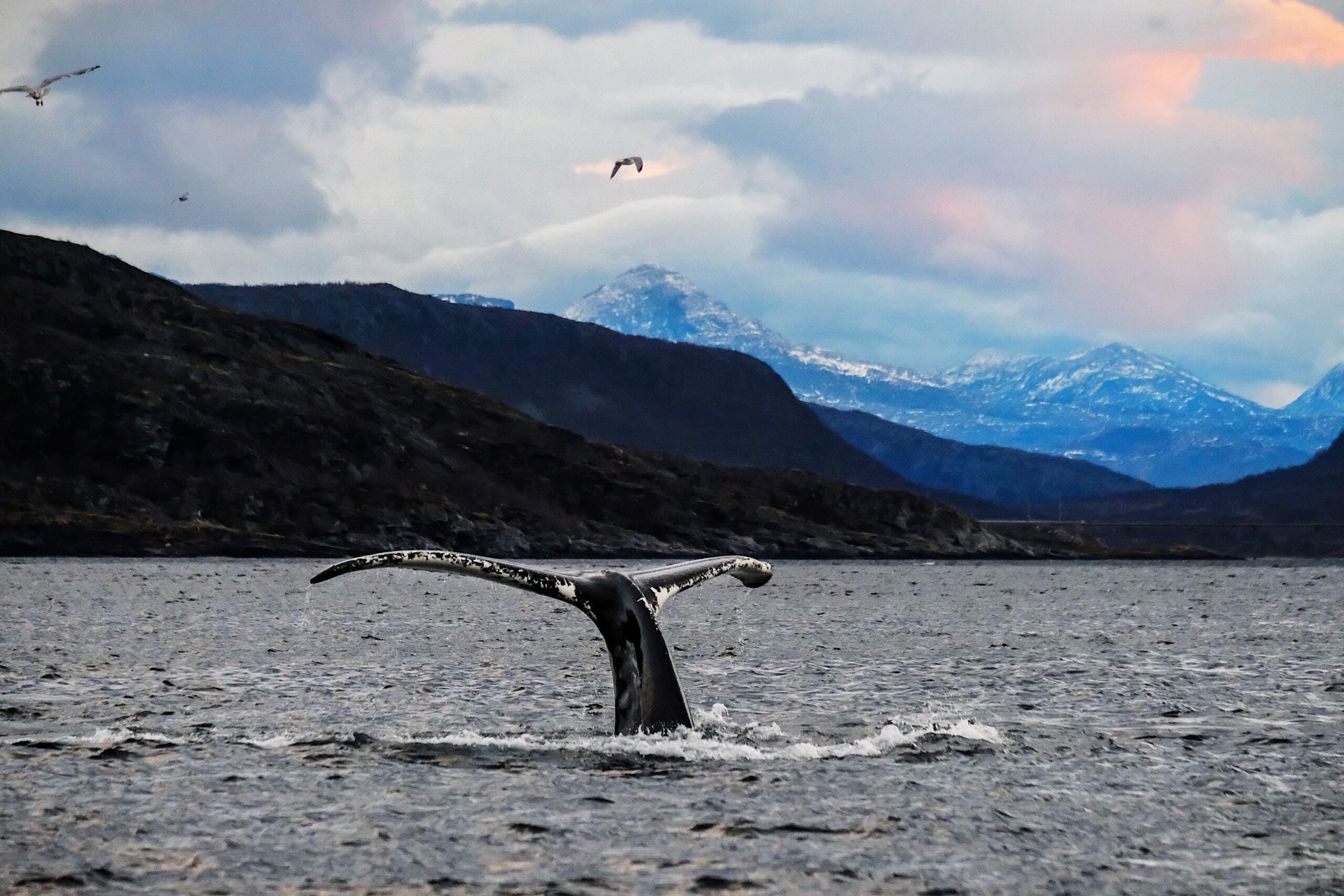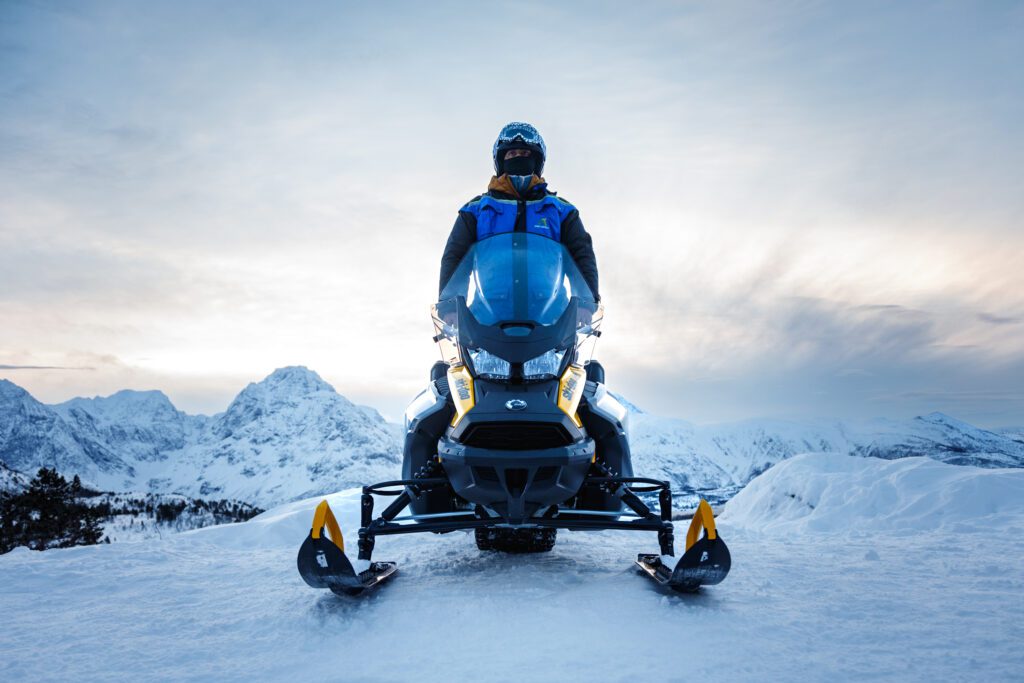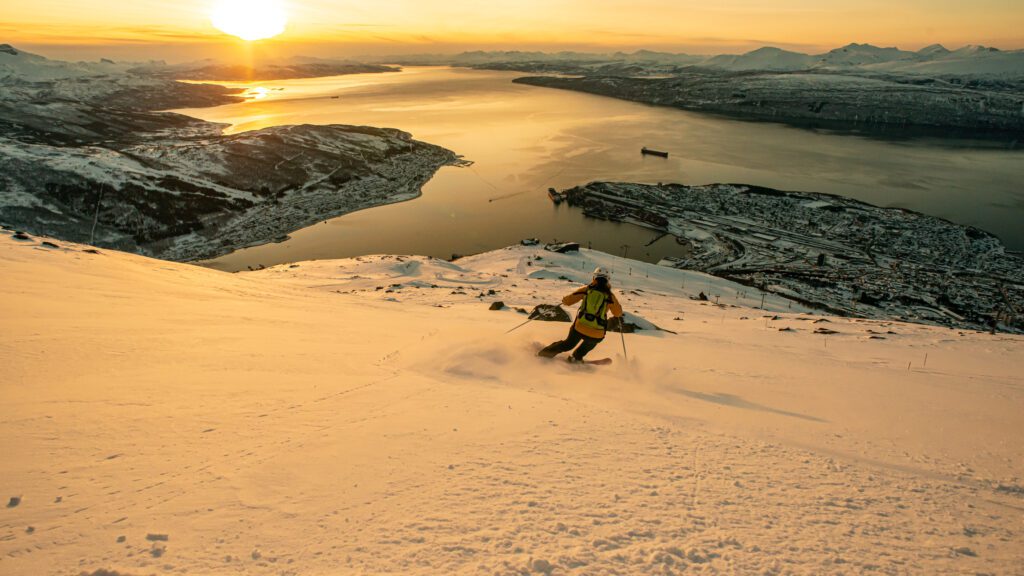You’ll find various options to embark on your whale watching adventure from Tromsø. Whether you choose a boat tour departing from the city center or opt for a combination of bus travel and a Rigid Inflatable Boat experience, you’re in for an unforgettable journey.
This guide will walk you through the best times to see whales, which tour options Best Arctic offers, what to expect during your excursion, and further information about best practices and responsible whale watching to protect these incredible animals and their environment.
Best time for Whale Watching in Tromsø
November to January peak season
The prime time for whale watching in Tromsø during winter is from November to January. This period offers you the best chance to spot magnificent marine mammals in the fjords around Tromsø.
During these months, large numbers of orcas and humpback whales gather in the area, drawn by the abundance of Norwegian spring-spawning herring that overwinter in these waters.
However, it is possible that the whales migrate earlier than normally expected, and tours start earlier (by the end of October). If you are travelling to Tromsø in the second half of October, and wish to join a whale watching tour, keep yourself updated and check if these tours start earlier on this page.
Factors affecting whale migration
The presence of whales in Tromsø’s waters is closely tied to the migration patterns of herring. In recent years, there’s been a shift in herring concentrations, leading to changes in whale distribution.
The fjords around Skjervøy, north of Tromsø, have become a hotspot for whale sightings since 2017. This demonstrates how their prey’s location influences whale movements.
Types of whales you can see
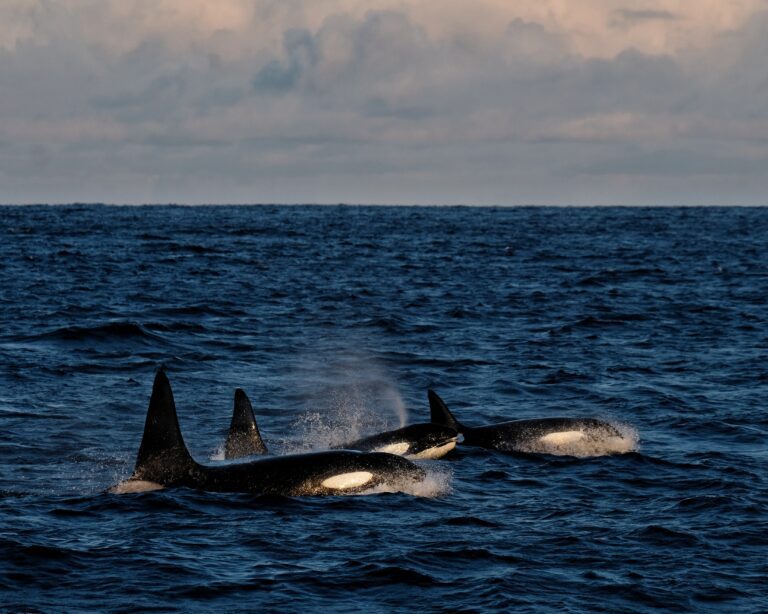
During your whale watching tour in Tromsø, you’re likely to encounter orcas, also known as killer whales, and humpback whales. These species are frequently spotted in the area during the winter months. Orcas are drawn to the region by the large herring population, while humpbacks make their way to these northern waters after giving birth in warmer climates. If you’re lucky, you might also see fin whales, minke whales, or harbor porpoises.
Besides whales, keep an eye out for sea eagles and other marine life. Remember, wildlife sightings are never guaranteed.
Whale watching tours typically last several hours, with about 1-1.5 hours dedicated to observing whales at their prime feeding spots. By the end of January, you will see less whales each day, as they continue their migration.
Daytime light to whale watch
Whale watching in Tromsø during the polar night (lasting between end of November to mid-January) is indeed possible and can be a magical experience. Even though the sun doesn’t rise above the horizon during the polar night (approximately from November 27th to January 15th), there’s still a period of twilight each day. This twilight, lasting from about 9 AM to 2 PM, provides enough light to see the whales.
Whale watching tours are specifically designed to operate during these lighter hours. They typically start early in the morning to make the most of the available light.
The darkness doesn’t affect the whales’ presence. The whale watching season in Tromsø runs from late October to late January, matching perfectly with the polar night period. This is when herring comes to the coastal waters, attracting various whale species.
Whale watching tour options from Tromsø
Boat tours from Tromsø city center

You have several options to embark on your whale watching adventure in Tromsø during winter. One popular choice is to join a boat tour departing directly from Tromsø harbor. These tours onboard large, comfortable vessels that can accommodate up to 140 to to 200 passengers (depending on the vessel).
Knowledgeable guides provide informative presentations about local wildlife and safety procedures. Although these larger boats may not get as close to the whales as smaller vessels, they offer a stable platform for viewing and ample space to move around.
- Silent Whale Watching – onboard a hybrid comfortable and modern catamaran. This tour departs Tromsø city center at 08:00 (am), and lasts about 8 to 9 hours until you are back in town;
- Whale Safari with Guarantee from Tromsø – Also a catamaran with warm inside decks and panoramic views, a tour duration of 8 hours, and capacity of 200 passengers.
RIB boat tours from Skjervøy
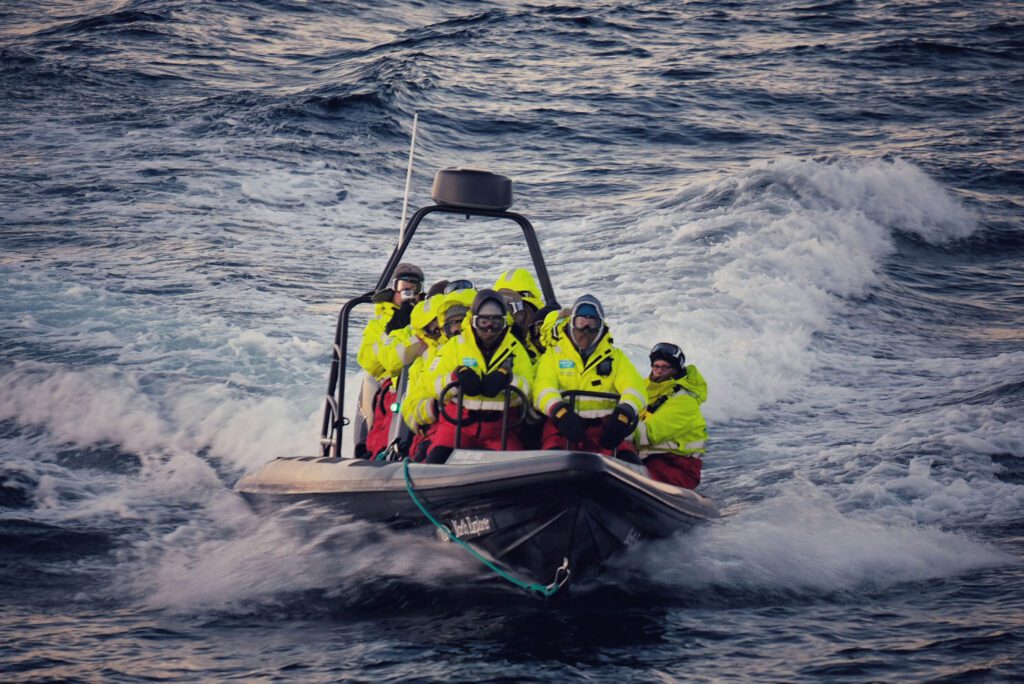
For a more intimate and exhilarating experience, you can opt for a RIB (Rigid Inflatable Boat) tour from Skjervøy. This option involves an early morning bus ride from Tromsø to Skjervøy, followed by an exciting boat ride to the whale watching areas.
RIB boats are smaller, faster, and can get closer to whales, providing an up-close encounter with these magnificent animals. This tour has a maximum of 12 passengers, age limit of 6 years old (and a minimum height of 120 cm), ensuring a personal experience.
You’ll be provided with warm flotation suits and safety gear.
Boat tours from Skjervøy
If you prefer to minimize your time on a boat due to sickness or any other reason, but still choose a bigger boat, instead of a Rigid Inflatable boat, you can also do it.
We offer you a tour with return transport in a bus, followed by a tour in a large, safe boat for 2 – 3 hours of whale observation, with capacity to maximum 80 guests and closed decks. Check our Winter whale watching in Skjervøy, from Tromsø.
We also have available our Whale watching and Orcas premium boat experience from Tromso with Arctic Route. It starts with bus transport from Tromsø early in the morning, followed by a comfortable tour on a covered small boat, with capacity up to 10 people.
What to expect on a Whale Watching Tour
Photography tips
To capture the best shots of whales in Tromsø, use a camera with good low-light performance, as daylight is limited during winter. A lens with a focal length of 100-200mm is often sufficient, allowing you to include the stunning mountain backdrop.
Set your shutter speed to at least 1/500 to avoid blurry images due to boat movement. Use multiple-photo mode to increase your chances of getting great shots, as whales surface only briefly. Remember to turn off your flash to avoid disturbing the animals.
Seasickness considerations
If you’re prone to seasickness, take preventive measures half an hour before boarding. We also recommend you choose the tours with bus transport from Tromsø to Skjervøy and back, to minimize time spent on the boats, if you are prone to sea sickness.
Consider taking seasickness medication and focusing on the horizon to minimize discomfort.
Responsible Whale Watching practices
Guidelines for minimal disturbance
When you embark on a whale watching tour in Tromsø during winter, it’s crucial to follow responsible practices to protect these magnificent creatures.
The rules say that the approach to whales should be done slowly, maintaining a speed of less than 5 knots when within 300 meters. It’s important to move parallel to the whales’ direction, avoiding approaching directly from behind or in front.
This means that we need to keep our distance, with minimum speed staying at least 100 meters away from orcas and humpback whales. If the animals show signs of stress, such as sudden movements or increased speed, it’s time to retreat slowly and quietly.
Importance of maintaining distance
Maintaining a proper distance is vital for the well-being of whales in Tromsø’s waters. Boats should not encircle whales or block their freedom of movement.
Remember, these are wild animals in their natural habitat. Responsible whale watching means respecting their space and behaviours. Sometimes, whales approach the boat, as they are curious. If this happens, engines will go neutral and only re-engage once they’ve passed.
Whale watching in Tromsø during winter offers a unique chance to witness majestic orcas and humpback whales in their natural habitat. This popular activity sells out quickly, so it’s wise to book your spot well in advance. We recommend you book your tour online via our website here.
By respecting whales and their environment and teaching about them, we can ensure that future generations will also have the opportunity to enjoy this breathtaking experience.

